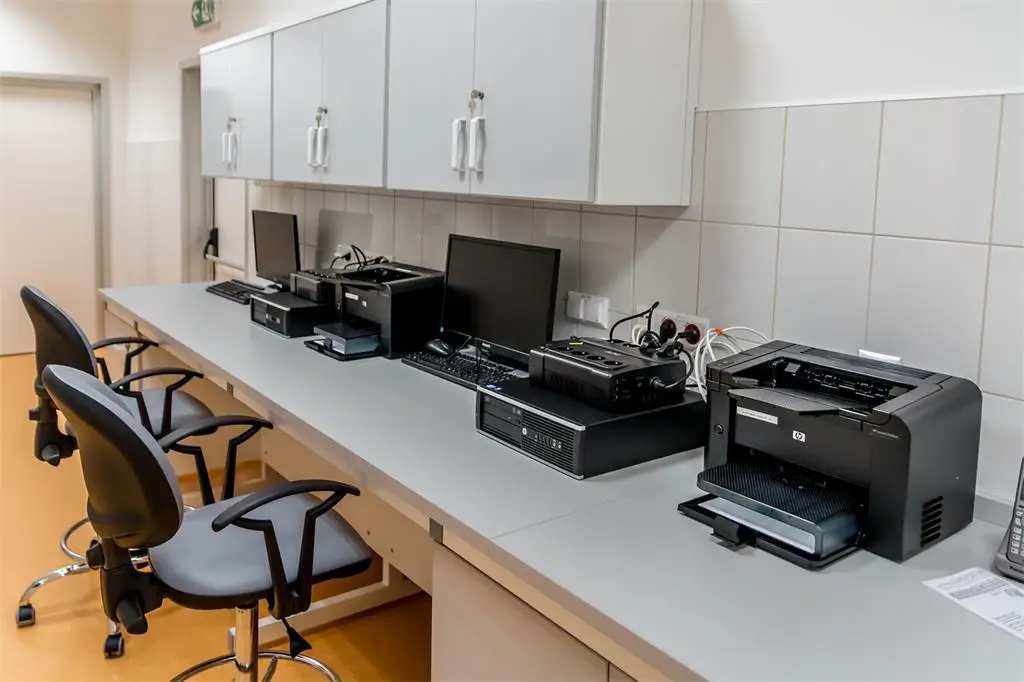Business
5 Ways Businesses Can Reduce Cargo Theft Rates


While you likely do not hear much about it on the news, cargo theft is a rising threat that affects countless companies as well as our nation’s economy and security. The groups who perpetrate these thefts have become increasingly violent and more organized than ever. As a result, the cost of cargo thefts is rising.
The problem impacts every industry, and as criminals become more intelligent and find new ways to secure their targets, business owners must work harder to protect their cargo. Exactly how can businesses reduce cargo theft rates? Let’s examine a few potential ways.
Defining Cargo Theft
Cargo is defined as any commercial shipment that is being moved from its point of origin to its final destination. It may be transported by trucks, rail cars, planes, ships, etc. If it is stolen at any point when in transit, the crime is classified as cargo theft. Cargo theft can happen on the highway, at truck stops and terminals or in storage facilities and warehouses. As long as the theft occurs somewhere between a shipment’s point of origin and its destination, it is considered cargo theft.
Until recently, cargo theft statistics were never listed as a separate reportable category in the Uniform Crime Report, or UCR. Many companies do not report these crimes as a means of avoiding higher insurance rates, bad publicity, embarrassment or damage to their reputation. As a result, the exact amount of money lost each year due to cargo theft is unknown. Experts estimate, however, that cargo thefts result in up to $30 billion in losses annually.
Cargo theft is a huge problem that impacts everyone from big business owners to the consumer purchasing items from the store. Items cost up to 20% more to make up for losses due to cargo theft, and state and local governments miss out on sales tax revenue. Because cargo theft affects virtually everyone, it is important for businesses to be proactive about protecting their shipments. While there is no fail-safe means of protecting every shipment from determined criminals, there are several things you can do to help reduce your chances of falling victim.
Make Use of Technology
Spending money on technology that helps protect loads is never a bad investment. There are several tools on the market that help business owners track stolen vehicles and cargo. If you are not using GPS to monitor the location of your shipments, you are doing your business a disservice.
Geofencing apps are another great way to put GPS tracking to work for your business. These programs notify if a tracked vehicle travels outside of its designated route. In doing so, it alerts you to a potential problem almost immediately. There are also devices that allow you to render a vehicle stationary if you suspect that it has been stolen.
Don’t Forget Low-Tech Security Measures
Things like GPS and devices that allow you to track and shut down vehicles from any location are great, and they should definitely be a part of your company’s security measures. Don’t get so caught up in them, though, that you forget about all the low-tech ways to protect cargo.
Things like king pin locks, padlocks, shipping container security seals, lock bolts, air brake valves and glad hand seals or locks help keep criminals out of your precious corrugated boxes and act as theft deterrents.
Pay Attention to Theft Hot Spots
California reported more cargo thefts than any other state in 2015. Florida, Georgia, New Jersey and Texas are also hot spots for retail theft. When possible, avoid routes that lead through areas that are prone to criminal activity. When cargo is being delivered to or needs to pass through such areas, plan to be there during the daylight hours. Theft is most likely to happen on the weekend, with Friday being the most common day, so try to avoid high-crime areas during these times.
Familiarize yourself with your supply chain partners’ security procedures. Be careful when choosing transportation partners and intermediaries. These companies will likely have control of your shipment until it reaches its final destination, so be sure to only choose those that you can trust.
Carefully Screen Employees and Train Them to Prevent Theft
Unfortunately, inside cargo theft is becoming increasingly common and it may lead to more organized crime. When hiring new employees, in-depth pre-employment screening is vital. Perform a complete background check as well as a criminal records check to minimize your likelihood of hiring unscrupulous employees. If you work with independent owner-operators, make sure they and their employees also submit to extensive background checks.
Training is also extremely important when it comes to preventing cargo theft. Instruct all drivers not to stop for meals or food for at least the first 200 miles after picking up a trailer. Thieves often follow loads when they leave the yard in anticipation of the driver making an early stop. Encouraging your drivers to travel at least 200 miles prior to making a stop helps deter many of these opportunistic thieves who are looking to make a quick score on shipping drums.
Make security a primary element of your business’s culture and encourage everyone involved in the shipping process to be aware of their surroundings. Require them to take steps to avoid theft but remind them that no load is worth sacrificing their own personal safety.
Conduct Periodic Security Audits
Personnel and operations are always changing. Stay on top of those changes and conduct periodic security audits to make sure that your measures are still effective. Criminals are also always finding new ways to steal cargo, so it is crucial to ensure that your security measures are up to fighting the latest theft techniques.
Cargo theft is a serious problem that affects businesses in all industries. The impact is felt by virtually everyone–from high-level suppliers to low-level consumers. While no plan is foolproof, the tips listed above will help you avoid falling victim to this all-too-common crime.
Business
What You Need to Know Before Buying Used Printing Equipment


Purchasing used printing equipment can be a very decent decision if your aim is to save money.
But, cautiously purchase second-hand printing machines because there can be hidden problems that will not be evident at the time of sale and will eventually raise their ugly heads and increase your costs.
If you are considering buying used printing equipment, here is what you need to know before making a purchase so you’ll come out making a very good investment. Read on to know the tips!
Know Your Needs
It is always good to know your needs before you begin shopping for used printing equipment. First, you should know the kind of printing you do.
There are machines designed to handle different modes of printing, including digital, offset, or screen printing. Then, come to decide the production volume.
Of course, if you need it for high-volume jobs and sometimes infrequent use, your needs will be different. Set up your budget. Knowing your budget in your pocket helps narrow down choices and prevent overspending.
Research the Equipment
Do your research about the different printing equipment available once your needs are well known. Understand models and brands and what each model can offer. Note down the specifications, for example, the size of the machine, the speed, resolution, and its capabilities.
Reputation of brands you are considering is essential since some of them have been known for their reliability and longevity. Also important is knowing the maintenance requirement for each machine and whether or not spare parts are readily available.
Check the Status/Condition of the Equipment
The condition of the used printing equipment is crucial. Look at the machine for any signs of wear and tear, such as rust, dents, or scratches. Make sure that all the parts of the machine are in operational condition; this may require a demo or a test print.
Ask the seller for records of any maintenance or repairs that have been done on the equipment to assess its history.
Ask for a Demonstration
A demonstration is a must when buying second-hand machines. These allow you to see the machine in action and confirm that this is what you want.
During your demo, observe the performance of the machine at a given time, such as the print quality and speed, and listen for unusual sounds since these may indicate mechanical issues. Try all features and functions to make sure they work as expected.
Evaluate the Seller
This may affect a lot your purchase because the reputation of the seller counts. Find a seller who has a good track record and experience in selling off-used printing equipment.
Good customer service is important since such service can be priceless after purchase if problems arise. Understand the return policy of the seller in case the equipment doesn’t meet your expectations.
Check the Equipment’s Age and Usage
Age and usage can impact the performance and life expectancy of equipment. Older equipment might wear out, and locating replacement parts could be a challenge.
Heavier used machines might have more problems when compared with those lightly used. So, check them very carefully.
Verify the Equipment’s Specifications
The equipment being utilised should be the exact one which you specify for your business. Ensure quality prints and resolution, and the color they give is exact according to your needs.
Check that the speed of the machines deals with your production rate efficiently. Ensure equipment compatibility with the current workflow and materials.
Inspect the Software
Many printing machines operate with the help of software. Ensure that the machine you are selling or buying has the necessary software and check its condition as well.
Also, check the software version. You can ensure it is the latest available version to operate efficiently and perform your work. Also, ensure that the licensing for software is valid to avoid any kind of problem legally or operationally.
Consider the Cost of Ownership
Apart from the purchase price, consider how much the equipment will cost during its lifetime. Add up the routine maintenance costs and the likely repair costs. You can also add the consumables’ cost like ink, paper, and other materials.
You may also consider how much power the equipment consumes because the older the machine, the less energy efficient it may be, and you will have higher utility bills.
Seek Professional Opinion
If you are not good with printing machinery, it may be a good idea to take a professional opinion.
A technician or a consultant will provide you with a detailed report on the condition of the equipment, estimate the probable cost for future maintenance and repair, and advise you whether the equipment meets your requirements.
Price Negotiation
Once you have inspected the equipment and are happy with the condition, don’t be afraid to try to drive down the price. Do research so you know about the approximate market value for similar equipment to make a good deal.
Based on some of the issues or wear and tear, you can comfortably negotiate the price of the equipment. Consider additional costs for transportation or installation.
Review the Warranty and Support
See whether the equipment is warranted and understand what it covers. A warranty creates confidence for you and saves you from hidden issues.
Make sure that you will be given technical support when necessary, as this may be important for the resolution of any problems after purchase.
Plan for Installation and Training
Proper installation and training are important in fully realizing value from your second-hand printing machinery. Let the machinery be installed the right way to avoid problems in its operation. Where possible, train your employees on how to use the machine effectively and optimize its features.
Understand Legal and Compliance Issues
Ensure that the equipment applied is according to legislation locally and according to the standards in the industry. Ensure confirmation of relevant safety and environmental standards. Ensure that it adheres to all local regulations concerning printing equipment to avoid any legal issues.
Conclusion
Buying used printing equipment can be a practical choice if done thoughtfully.
Once you research your options well, check the condition of the equipment, and take into account any on-running costs, you are at a good position to make an informed purchase, which truly fits your needs.
Never be afraid to consult professional advice if you require it, always negotiate the price to get the best one available.
With careful planning and due diligence, you will find high-quality used printing equipment without blowing the budget.
Business
How to Launch a Successful Photography Business


Having a photography business is a wonderful way to pursue your passion for photography and make money at the same time. You could set your own hours, travel, and do meaningful work. Of course, setting up a successful business can take some doing.
The competition in the photography niche is stiff, clients notoriously demanding, and the income unsteady – at least in the beginning.
To maximize your chances of success, check out this mini-guide on setting up your very own – profitable – photography business:
Make Sure You are Mentally and Emotionally Prepared
If you’re serious about making money from photography, you’d do well to treat it as a business as opposed to a side gig. That way, you’ll value and monetize your work appropriately in a way that allows you to sustain yourself long-term.
Running a business requires a great deal of patience, planning, and business-related work, from administration to customer management. It can also be risky. Are you mentally prepared?
Research the Market and Pick a Specialization
Market research is crucial to success. How much are people willing to pay for photographers in your area? What kind of photography is the most lucrative? Who are your competitors, and what are they doing?
Understanding your ideal customers allows you to figure out the best way to serve their needs and, by extension, get paid well for your work. You should, ideally, pick a specialization that’s in high demand and aligns with your preferences and existing skills. Some examples are event photography, nature photography, and wedding photography.
Consider Brushing Up on Your Photography Skills
Taking a photography class could be well worth your time. You can explore different specializations and find one that works for you. Furthermore, you can pick up and hone key photography skills, gain feedback for your work from experts, explore the latest technology, and understand how to be a professional photographer.
Create a Business Plan
Creating a photography business plan is difficult and time-consuming but well worth it in the end. This document can give you clarity on the specific steps you need to take to set up your business.
It details your business model, monetization strategy, market conditions, funding, operational expenses, financial projections, and business goals. Additionally, you could use this document to attract investors if necessary.
Choose a Business Structure, such as an LLC
Having a business structure can simplify some aspects of running your business, make you seem more professional, and safeguard you against risk.
For instance, setting up an LLC protects your personal assets against lawsuits and offers some advantages like tax-related benefits and flexibility. You can file the LLC paperwork yourself, hire an (expensive) lawyer, or use an online LLC formation service.
Get Set Up
It’s time to get up and running. Start by taking care of the legalities such as registering with the government, acquiring licenses or permits, getting insured, getting an EIN, and more. Get all your work equipment in order and find a suitable location for your business.
Next, set up your work processes – how you’ll be offering your services to your ideal customer – using your business plan as a roadmap. You will also need to see to the administrative details such as bookkeeping and billing. You can use software to make this easier.
Finally, you’ll need somewhere to work. Running a business out of your home can be very cost effective, but you need to have enough space for your equipment along with a home office or even a dark room.
Brand and Market Your New Business
Good marketing is often the difference between success and failure for businesses. Creating a meaningful brand – whether that’s around you personally or your business – can make you memorable and help you build meaningful relationships with customers.
Offline and online marketing can help you find new leads and retain existing ones. Using an Instagram scheduler can streamline your social media efforts, ensuring consistent and timely posts to engage your audience.
Get Professional Help When Needed
Running a business involves many tasks that may be outside your area of expertise. Don’t hesitate to get professional help for aspects like accounting, legal matters, and marketing.
Hiring experts can save you time, prevent costly mistakes, and help you achieve a more polished and professional result. Investing in professional services can be crucial for your business’s long-term success.
Start Your Journey to Success
Setting up a successful business can take up to 10 years. As such, it may be a good idea to prepare yourself for the long haul. Brush up on your photography as well as entrepreneurial skills, work on your business processes, and focus on growth. If you persist, success will surely follow.
Law
Estate Planning Essentials: Wills, Trusts, and Protecting Your Assets


Estate planning is a critical aspect of financial management that often goes overlooked until it becomes a pressing necessity. Proper estate planning ensures that your assets are distributed according to your wishes, reduces the burden on your loved ones, and helps avoid costly legal battles.
This comprehensive guide will explore the essentials of estate planning, focusing on the importance of wills, trusts, and the various strategies for protecting your assets. With professional guidance from The Maddox Firm, you can navigate the complexities of estate planning and secure your legacy for future generations.
Understanding Wills
A will is a foundational document in any estate plan. It outlines your wishes regarding the distribution of your assets after your death and appoints guardians for any minor children. Without a will, your estate will be subject to intestacy laws, which means the state decides how your assets are distributed. This process can be time-consuming, expensive, and may not align with your wishes.
Creating a will involves several key steps. First, you must inventory your assets, including real estate, bank accounts, investments, and personal belongings. Next, you need to decide who will inherit these assets. This could be family members, friends, or charitable organizations. It’s also essential to appoint an executor, who will be responsible for managing your estate and ensuring your wishes are carried out.
One critical decision in your will is naming a guardian for your minor children. This decision should not be taken lightly, as the guardian will be responsible for their upbringing and welfare. Discussing this role with the chosen individual is crucial to ensure they are willing and able to take on this responsibility.
The Role of Trusts
While wills are essential, they are only sometimes sufficient to cover all aspects of estate planning. This is where trusts come into play. A trust is a legal arrangement where a trustee holds and manages assets on behalf of beneficiaries. Trusts can provide several benefits, including privacy, probate avoidance, and potentially significant tax advantages.
There are different types of trusts, each serving specific purposes. A living trust, also known as a revocable trust, allows you to manage your assets during your lifetime and specifies how they should be distributed upon your death. One of the primary benefits of a living trust is that it helps avoid probate, a legal process that can be lengthy and costly.
Another common type is an irrevocable trust, which cannot be altered once established. Irrevocable trusts are often used for tax planning and asset protection. By transferring assets into an irrevocable trust, you remove them from your taxable estate, potentially reducing estate taxes. Additionally, assets in an irrevocable trust are typically protected from creditors.
Special needs trusts are designed to provide for a loved one with disabilities without jeopardizing their eligibility for government benefits. These trusts ensure that funds are available to enhance the beneficiary’s quality of life without disqualifying them from essential services.
Protecting Your Assets
Protecting your assets is a crucial component of estate planning. Your assets can be vulnerable to creditors, lawsuits, and other financial risks without proper protection. One effective strategy is asset titling, which involves structuring ownership of your assets to minimize risk. For example, holding assets jointly with a spouse can provide some protection from creditors.
Another strategy is using insurance to safeguard your wealth. Life insurance can provide liquidity to cover estate taxes and other expenses, ensuring your assets are preserved for your heirs. Long-term care insurance can also protect your estate from the high costs of nursing home care. Disability insurance is another critical consideration, ensuring a steady income stream even if you cannot work due to illness or injury.
In addition to insurance, creating a family limited partnership (FLP) can offer significant asset protection benefits. An FLP allows you to transfer ownership of assets to family members while retaining control over their management. This structure can shield assets from creditors while facilitating the transfer of wealth to the next generation.
Another effective strategy is establishing an asset protection trust. These trusts are designed to protect your assets from potential creditors and lawsuits. Placing assets in an asset protection trust can create a legal barrier between your wealth and potential claimants. These trusts are often irrevocable, meaning they cannot be altered once established, providing high security for your assets.
Utilizing retirement accounts is another way to protect your assets. Certain retirement accounts, such as 401(k)s and IRAs, offer creditor protection under federal law. By maximizing contributions to these accounts, you can grow your wealth while safeguarding it from potential creditors.
Additionally, implementing prenuptial and postnuptial agreements can be prudent in protecting your assets. These agreements outline how assets will be divided in the event of a divorce, ensuring that your estate plan remains intact and your assets are distributed according to your wishes.
Conclusion
Estate planning is not a one-time event but an ongoing process that requires careful consideration and regular updates. Wills and trusts are essential tools that help ensure your wishes are honored and your assets are protected.
By understanding the differences between wills and trusts and implementing strategies to safeguard your wealth, you can create a comprehensive estate plan that provides peace of mind for you and your loved ones. Seeking professional guidance from The Maddox Firm can simplify this complex process and help you achieve your estate planning goals, securing your legacy for future generations.
-



 Quotes4 years ago
Quotes4 years ago125 Inspirational Car Quotes and Captions to Celebrate Your New Car
-



 Growth4 years ago
Growth4 years ago188 Deep Hurt Quotes with Images
-



 Quotes4 years ago
Quotes4 years ago148 Romantic Love Quotes for Her from the Heart
-



 Quotes3 years ago
Quotes3 years ago164 Relationship Goals Quotes for New Couples Expecting a Long Lasting Relationship
-



 Quotes4 years ago
Quotes4 years ago185 Cute Boyfriend Quotes for the Guy You Love
-



 Quotes4 years ago
Quotes4 years ago141 Best Heart Touching Quotes about Love, Life, and Friendship
-



 Quotes3 years ago
Quotes3 years ago134 Time Flies Quotes for the Unforgettable Moments
-



 Quotes4 years ago
Quotes4 years ago122 Inspirational Kite Quotes That’ll Make You Wanna Fly Right Now






